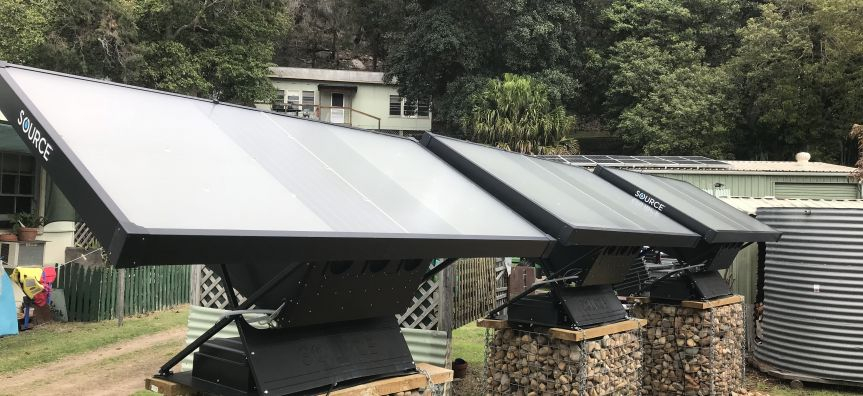
We are working collaboratively with the community and key stakeholders to accelerate action to tackle climate change by reducing our emissions to help limit future climate change impacts. We are also reducing risks and addressing long term predicted effects of climate change which include impacts from sea level rise, frequency of extreme weather events, bush fires, coastal storms, floods and drought.
This is a challenge we can all work on together. In December 2019 Northern Beaches Council adopted Protect. Create. Live. Environment and Climate Change Strategy 2040. The strategy provides a roadmap for how we are shaping a bright environmental future by addressing the challenges and embracing opportunities. The strategy is supported by the Climate Change Action Plan.
Mitigation
Greenhouse gas emissions drive climate change and are generated through electricity and gas usage, transport choices and waste generation. At Council, we recently cut our organisation's emissions by around 80% by signing up to 100% renewable electricity.
As a community the Northern Beaches contributes almost 2 million tonnes of these emissions. We all need to reduce our carbon emissions to mitigate the future impacts of climate change.
As illustrated by the graph to the right, electricity comprises of 56%, transport 29%, waste 8% and gas 7%, of carbon emissions on the Northern Beaches.
Adaptation
We are already experiencing changes to our climate and further change is unavoidable (IPCC, 2018). Past emissions remain in the atmosphere for decades and during this time continue to cause temperatures to increase, essentially locking future change into the system. It is critical we prepare for these changes. We do this by being prepared for what is to come and adapting the way we design and build our structures. Buildings, roadways, stormwater pipes and seawalls will need to stand for the next 50 -100 years and be able to withstand future impacts.
We are working to develop and integrate policies and strategies that address climate change adaptation and community resilience. Council is also working with peak bodies to develop new frameworks to build resilience into infrastructure assets.
To see more of what Council has been doing have a look at our sustainability actions page, or check out the range of environmental programs and resources Council offers to help you take action on climate change.
Climate change adaptation and emissions reduction
From Protect. Create. Live. Environment and Climate Change Strategy 2040. page 13 * Adapted from Australian Government, 2015

Ways to mitigate
Climate change mitigation means reducing or avoiding greenhouse gas emissions to minimise the rate and magnitude of climate change.
- Enhancing energy efficient lighting uses 8-15% of the average Australian household electricity. Switching to LEDs can significantly reduce energy usage
- Increased uptake of renewable energy - 19% of Australia's electricity came from renewable sources in 2018
- Improvements in industrial processes - for example improved maintenance and operation of boilers can reduce energy use by up to 5% in steam, hot water and process heating systems
- Increased uptake of sustainable transport - 21% of people in Sydney usually travelled to work by public transport in 2016
- Enhancing carbon sinks - a carbon sink is anything that absorbs more carbon than it releases. Bushland, soils, oceans and the atmosphere can act as carbon sinks.
Ways to adapt
Climate change adaptation means taking steps to prepare and respond to the effects of the changing climate.
- Changing the use of land can protect buildings and infrastructure from existing and new hazards and can allow for changes in the landscape
- Upgrading or hardening the design of buildings and infrastructure - CSIRO wind design standards for all new housing can reduce the risk of damage from wind by 50-80%
- Adjusting activities and lifestyle - to manage increasing heat some sporting organisations are changing the time games are played to avoid the heat in the middle of the day
- Emergency and business continuity planning - Even without factoring in climate change, the total economic cost of natural disasters in Australia is forecast to rise to $23 billion annually by 2050
- Increasing community understanding of climate risks - to build capacity in the community to adapt to the changing climate.
Some actions can have mitigation and adaptation benefits
- Environmentally responsible building design
- Mangrove and saltmarsh planting and restoration of catchments
- Water conservation
- Urban growing (of trees)
Useful links
- Intergovernmental Panel on Climate Change
- CSIRO
- Bureau of Meteorology
- NSW Department of Primary Industries and Environment
- Climate Change in Australia
- BOM Climate and Past Weather
- AdaptNSW
- CoastAdapt
- National Climate Change Adaptation Research Facility
- National Climate Resilience and Adaptation Strategy
- Local Government NSW Building Resilience to Climate Change Case Study
- IPWEA Practice Note 12.1: Climate Change Impacts on the Useful Life of Infrastructure
- Addressing climate change
